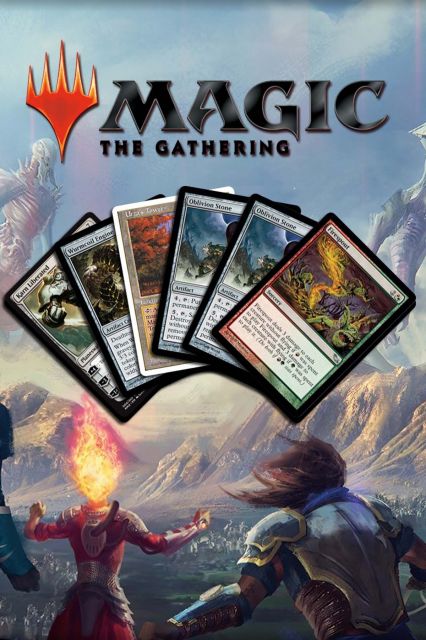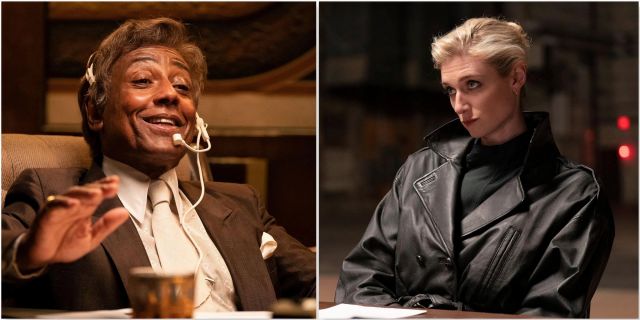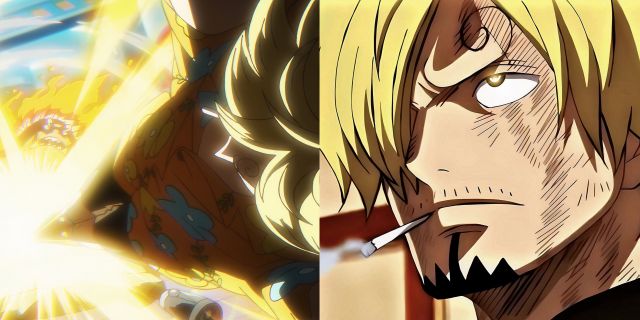Highlights
- Magic: The Gathering, a popular card game since 1993, is finally getting a Netflix adaptation, and fans are eager to see it after years of anticipation.
- The TV series should focus on the Planeswalkers, powerful wizards who can travel between dimensions, and an ensemble cast representing each color of MTG’s color pie.
- The show should stay true to the game’s intricate storytelling, with each season focusing on one story at a time, and explore different planes with unique cultures and creatures, like Ravnica, Mirrodin, and Dominaria.
Labeled as the most complicated card game in history, Magic: The Gathering is finally receiving the Netflix treatment. Fans all across the globe have enjoyed this tabletop card game since 1993, and it astonishingly hasn’t found its way onto the small or silver screen since. This is a card game that everyone knows about whether they play or not. As of 2023, Wizards of the Coast has created over 100 expansions for the card game.
It’s a game that doesn’t tell a story in the traditional sense. Wizards of the Coast occasionally post short stories about Magic: The Gathering that follows fan-favorite characters on its website, but the game itself tells its story through the images illustrated on each card. Even though a large portion of its community only focuses on playing the game, there is a detailed story unfolding that has been ripe for an adaptation for years. Now that it’s happening, there are a few things the show needs to nail in order to gain fan approval.
RELATED: Predicting Fallout x Magic The Gathering’s Most Iconic Cards
The Core Planeswalkers
Magic: The Gathering has a long list of characters a TV series can take advantage of, but the most obvious choice is one or more of its featured Planeswalkers. Planeswalkers are powerful wizards who can travel between dimensions, most commonly called planes. Many of these characters have in-depth backgrounds told across a series of cards throughout multiple sets. The interesting aspect of Magic is that a show wouldn’t have to worry about an origin story for them because they’re fascinating and nuanced without one.
However, thanks to the set “Origins,” fans got to see where each of the main five characters come from and their motivation, giving showrunners material if they so choose to go that direction. It would be challenging to have a series focus only on one of the Planeswalkers since many of their stories intersect. The series should focus on an ensemble cast and follow one Planeswalker from each color of MTG’s color pie: White, blue, red, black, and green. The obvious choices for these color identities would be Gideon, Jace, Chandra, Liliana, and Nissa, respectively. Garruk might be able to replace Nissa if they’re not both featured. However, those are only the newest Planeswalkers, in a way.
Magic: The Gathering originated in 1993 and told a fascinating story about two brothers who went to war against each other in its earliest iterations. These brothers, Urza and Mishra, were the first Planeswalkers the game’s developers introduced to its player base. They also introduced one of the game’s longest ongoing stories, the antagonistic Phyrexians and New Phyrexia, which didn’t receive a proper conclusion until 2023’s March of the Machines set. A TV series focusing on this war would be a fascinating experience for seasoned fans and new audiences.
It’s more likely that a Magic: The Gathering TV series would focus on the “Lorwyn Five,” which were the Planeswalkers that came about when the game introduced the Planeswalker card type. These five were Ajani, Jace, Chandra, Liliana, and Garruk. A TV series may follow these five at first to establish the world of Magic before branching out to other popular Planeswalkers.
Follow the Stories from the Game
Not much is known about the show’s story yet, but early statements claim that it will follow the “Gatewatch,” an Avengers-esque coalition of Planeswalkers who protect the various planes throughout the multiverse, with Gideon Jura as the “heart of the story.” No matter what the writers choose for the show’s main storyline, it shouldn’t stray from the card game too much. A different order of events? Sure. The primary beats should be present, though.
The storytellers who work on Magic: The Gathering tell some slow-burning tales that last for decades. Nicol Bolas, an ancient dragon Planeswalker, started his nefarious machinations in 2008 during the Shards of Alara set and didn’t receive a suitable conclusion until War of the Spark in 2019. While the TV series should follow suit, telling ongoing stories, each season needs to focus on one story at a time. Otherwise, it becomes overwhelming for the audience. It’s overwhelming at times for fans of the game to the point that many choose not to follow any of the stories, focusing only on the game.
There have been three main stories overlapping smaller plots within the card game. First, there was the Brother’s War, which kicked off everything with the grotesque Phyrexians hellbent on assimilating the entire multiverse. Nicol Bolas pulling strings from behind the curtain was another major story that seeped into different sets and revealed a little bit more of his plot layer by layer, like an onion. Completing the triad of significant antagonists in Magic: The Gathering are the Lovecraftian interdimensional beings known as the Eldrazi that consume plane after plane. These large entities received a seeming conclusion between two different sets on two different planes, but all hints point to their eventual return.
These stories are rich with material and themes that could last a decade’s worth of seasons on their own. Told correctly, the Magic: The Gathering TV series could be as intricate and beloved as Breaking Bad.
Popular Planes
It’s not Magic: The Gathering without all the different worlds the characters explore. The game started on Dominaria, acting as the hub of the multiverse, but eventually expanded into a plethora of vastly different planes with different cultures and unique creatures such as goblins, angels, vampires, and incredibly intelligent dragons. At first, it might seem daunting to include different planes in a television series, but it could easily take the Doctor Who approach. That series highlights a different time period or planet in every episode, not too dissimilar from different planes.
Of course, the Magic: The Gathering show must include all the greatest hits. Ravnica is a highly favored plane by fans of the game. It’s a plane that’s one giant densely populated city with different factions always trying to outmaneuver each other politically. Then there’s Mirrodin, which the Planeswalker Karn created as his little sanctuary until the Phyrexians invaded and corrupted it, turning it into their home known as New Phyrexia. Dominaria, the original plane, is a high fantasy realm that’s twice the size of Earth, with large continents, vast oceans, and an expansive history that spawned the most expansions from the game.
While not every plane needs to show up in one season, and the show should spread out the introduction of each one so as not to mess up the pace, there’s no shortage of settings for the series. Furthermore, the show should only go to a different plane with a narrative reason for it. Make the planes feel unique and significant.

Magic The Gathering
Magic the Gathering is a tabletop and digital collectable card game created by Richard Garfield and released in 1993 by Wizards of the Coast. Players take on the role of a Planeswalker and use various cards to battle other players by casting spells, summoning creatures, or utilizing artifacts. It features two main rule categories, constructed or limited, and can be played by two or more players at a time.











Leave a Reply